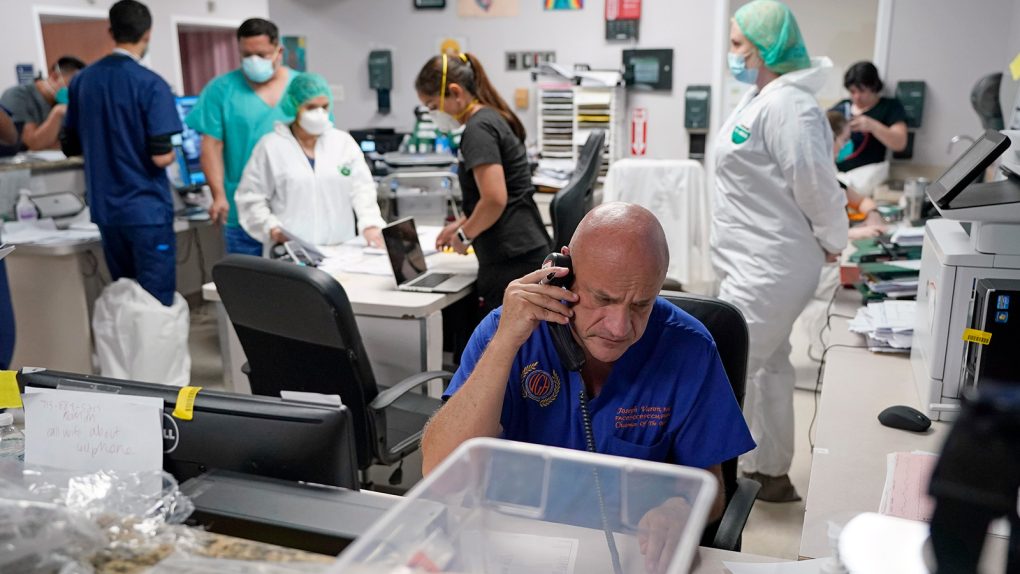- An internal CDC document reveals that the majority of coronavirus hotspots in the country are in Florida or Texas.
- Miami-Dade County in Florida has seen more than 40,000 new COVID-19 cases over the past two weeks.
- Many Texas hospitals are running at full or near-full capacity amidst a surge of new coronavirus cases.
An internal CDC memo obtained by Yahoo News reveals that nine of the ten biggest coronavirus hotspots in the United States are in two states: Florida and Texas. This, of course, shouldn’t come as too much of a surprise given that the number of new coronavirus cases in those two states started to skyrocket in early June. In fact, the situation in some Texas counties is so dire that some hospitals have been forced to turn away coronavirus patients because ICUs are already at full capacity.
The CDC document was circulated internally earlier in the week and highlights which U.S. counties should be categorized as “areas of concern” due to an ongoing increase in coronavirus cases. Five of the ten biggest COVID-19 hotspots can be found in Florida, with the situation in Miami-Dade County being especially worrisome. The document notes that Miami-Dade County has seen more than 40,000 new coronavirus cases over the last two weeks alone.
The 10 counties which saw the highest number of coronavirus cases per 100,000 people over the past two weeks is as follows:
- Columbia, Florida – 2,336 cases per 100,000 people over two weeks
- Allen Parish, LA – 2,026 cases per 100,000 people over two weeks
- Real, Texas – 1,868 cases per 100,000 people over two weeks
- Dewitt, Texas – 1,694 cases per 100,000 people over two weeks
- Refugio, Texas – 1,493 cases per 100,000 people over two weeks
- Miami-Dade, Florida – 1,459 cases per 100,000 people over two weeks
- Jackson, Florida – 1,405 cases per 100,000 people over two weeks
- Glades, Florida – 1,326 cases per 100,000 people over two weeks
- Starr, Texas – 1,311 cases per 100,000 people over two weeks
- Garden, Florida – 1,307 cases per 100,000 people over two weeks
Note that some counties have populations far below 100,000, a fact which can skew some of the data. Allen Parish County, for example, has a population of less than 30,000. As a result, their cumulative number of COVID-19 cases over the past two weeks was 519 even though the incidence per 100,000 is a much higher number.
Earlier this week, Texas Governor Greg Abbot said that many Texans mistakenly assumed that the coronavirus was something that had been defeated and that it has been challenging trying to convince the population that it’s something that should still be taken extremely seriously.
“We need to step up and understand the way we need to fully respond to it,” Abbot said.
Incidentally, Abbot previously tried to avoid instituting a mandatory mask requirement but ultimately caved earlier this month.
The Texas Tribune notes:
The mask order represents a remarkable turnaround for Abbott, who has long resisted a statewide requirement, even as the coronavirus situation has gotten worse than ever over the past couple of weeks in Texas. When he began allowing Texas businesses to reopen this spring, Abbott prohibited local governments from punishing people who do not wear masks. As cases began to rise earlier this month, he clarified that cities and counties could order businesses to mandate that customers wear masks.
As for Florida, the state not too long ago saw more than 15,000 new coronavirus cases in a 24-hour period, a figure which set a new record across the United States. Since then, the situation has improved ever so slightly with the daily number of new coronavirus cases in the state now hovering in the 9,000 range. Still, there’s no denying that the situation in Florida remains far from encouraging.








